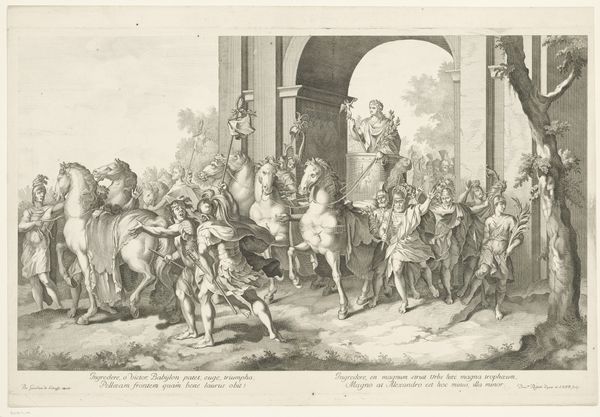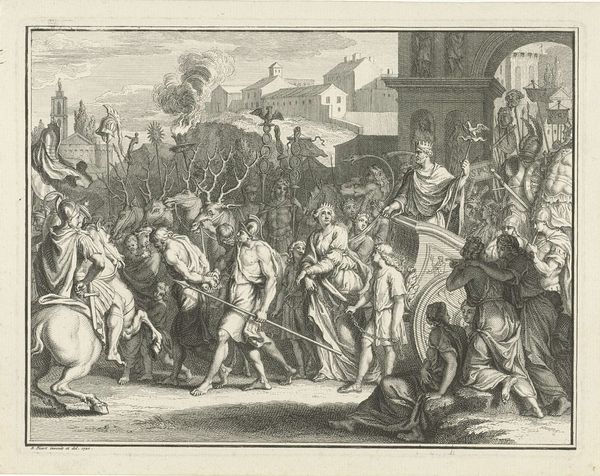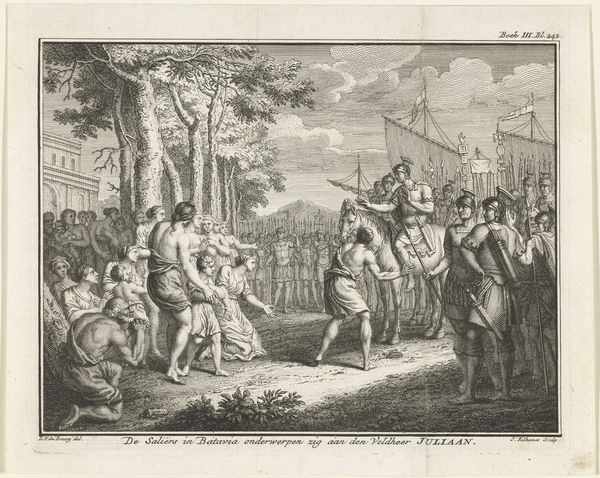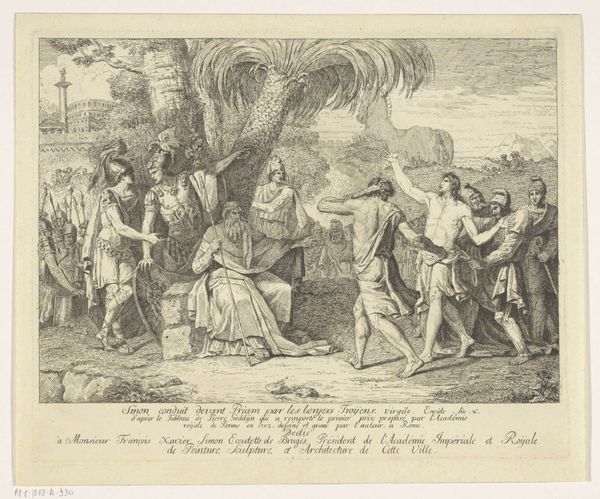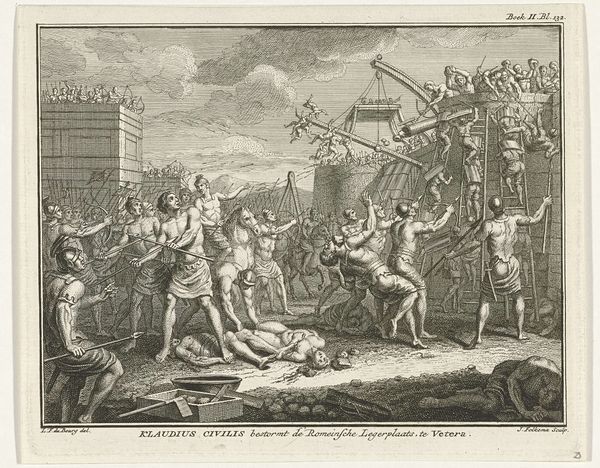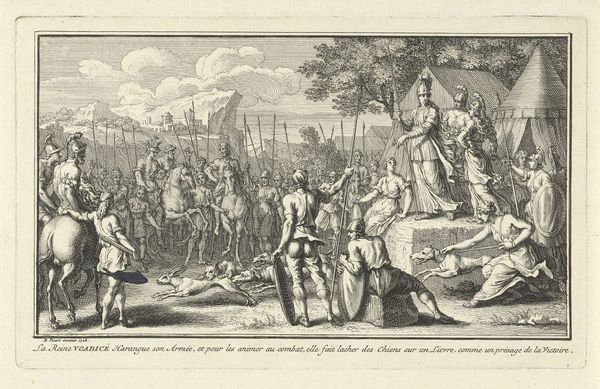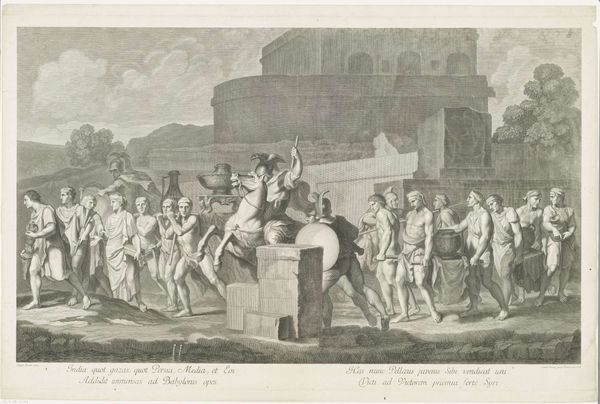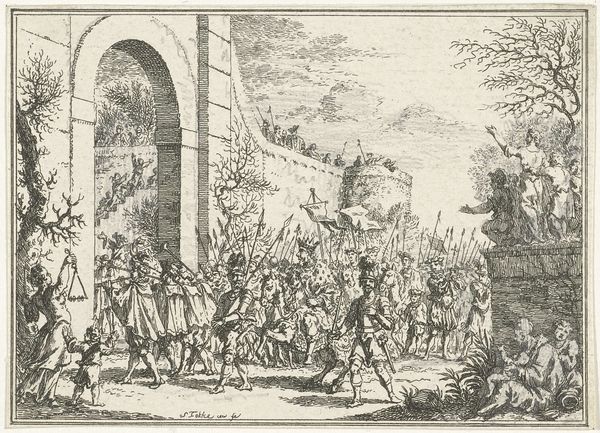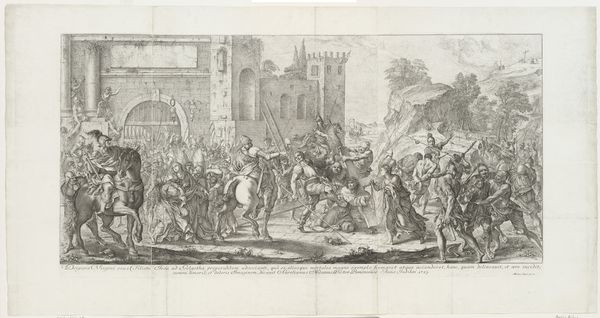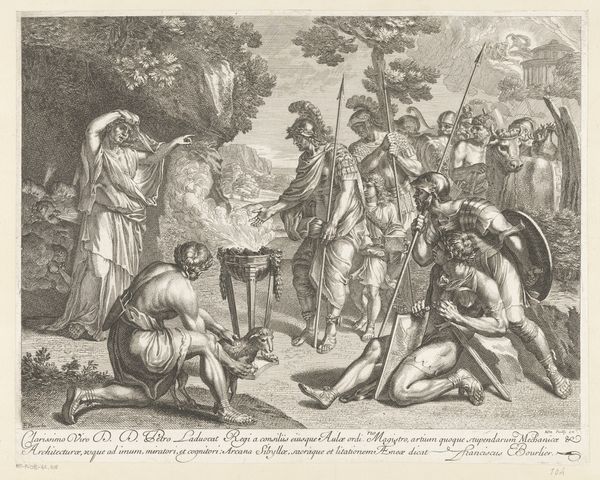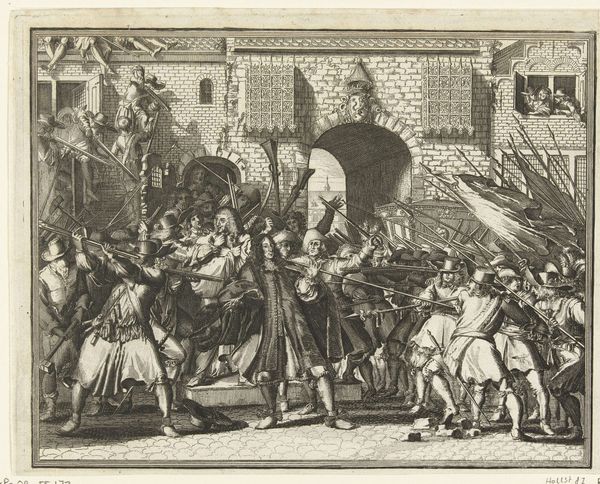
print, engraving
#
narrative-art
#
baroque
# print
#
history-painting
#
engraving
Dimensions: height 664 mm, width 974 mm
Copyright: Rijks Museum: Open Domain
Editor: This print, titled "Soldaten bij obelisk" – Soldiers by Obelisk – is attributed to Domenico Rossetti and was created sometime between 1660 and 1736. It's an engraving and evokes a rather grand, historical scene. The detail is incredible given the medium. What particularly strikes me is the level of craftsmanship evident in creating such an intricate image. What do you make of it? Curator: As a materialist, the print itself is fascinating. Consider the labor involved in its production, the artisan meticulously carving into a metal plate. Look closely: the act of producing prints allows images and ideologies to circulate. Editor: So you're focusing on the printmaking process and how the image was disseminated? Curator: Exactly! Engravings such as this weren't just aesthetic objects; they were products of a specific workshop, responding to a market demand for historical or allegorical narratives. The depicted soldiers and obelisk become almost secondary to understanding the conditions of the print's making. It also makes you wonder how much did this democratization and access affect art perceptions. How many consumers were actually seeing these things? Were they educated or wealthy or both? Editor: That makes me think about who was consuming these images. Were they propaganda, artistic expressions, or something in between? It shifts the meaning entirely if you think about the context in which they were made and consumed. Curator: Precisely! It challenges our romantic notions of the solitary artist, emphasizing the economic and social networks in which art operates. Editor: I hadn't thought about it that way, but viewing it as a material product embedded in a social system makes so much sense. Curator: And how might this shift in perspective alter our understanding of Rossetti’s place in art history? Food for thought, indeed.
Comments
No comments
Be the first to comment and join the conversation on the ultimate creative platform.
